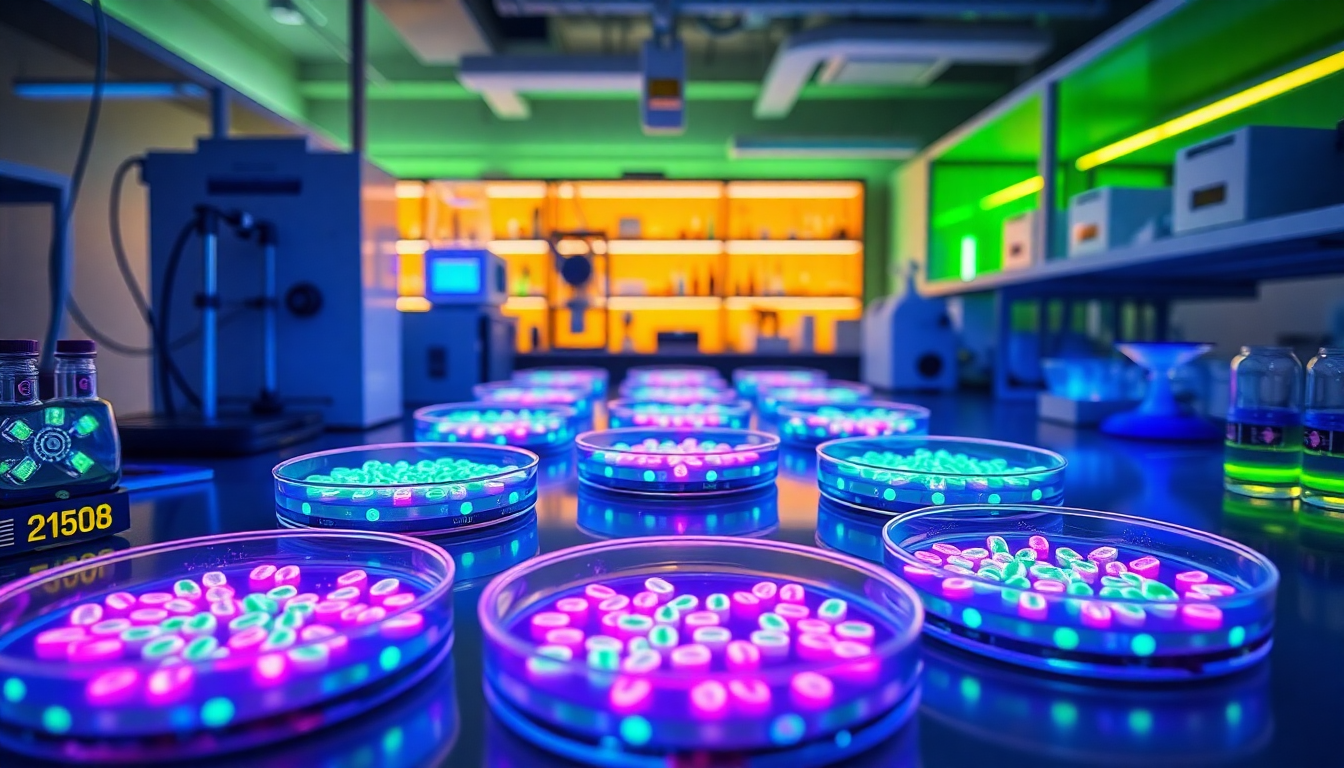In today’s world, where environmental sustainability and cutting-edge science are colliding like never before, we often come across ideas that seem straight out of science fiction. But here’s the kicker—sometimes, they’re real. Enter BaCta, a startup that is using genetic engineering to produce natural rubber in a way that might just save the planet from itself. This Paris-based company isn’t your run-of-the-mill biotech startup; it’s reimagining how we make one of the world’s most ubiquitous materials, rubber, while slashing CO2 emissions. The result? A potentially greener future for fashion, machinery, and more.
Rubber? In a Lab? Yes, and Here’s How
For those who don’t know, making natural rubber in a lab has been the white whale of the biotech world for years. Why? The natural polymer found in Hevea trees (think of the gooey latex sap) is notoriously difficult to reproduce outside nature. But BaCta has a new spin on this challenge. They’re using engineered E. coli bacteria to produce rubber, and they’re doing it with a carbon-neutral process.
So how do they pull off this scientific miracle? Well, let’s break it down:
- BaCta is using a renewable feedstock—right now, it’s glucose, but the plan is to diversify to acetate and even carbon. Yeah, that’s right, they’re aiming to make rubber out of thin air!
- The startup has figured out how to polymerize rubber inside these bacteria using “synthetic AI enzyme technology,” as explained by CEO Mathieu Nohet.
This innovative process promises a rubber product that is not only sustainable but also hypoallergenic by removing the proteins in tree sap that cause allergies. So not only is this future rubber better for the planet, but it’s also better for humans.
A Game-Changing €3.3 Million Boost
In the wild world of startups, funding is king, and BaCta is already making waves. The company just raised €3.3 million (about $3.6 million) in a pre-seed round led by OVNI Capital. Their goal? To scale this bio-engineered magic from milligrams of rubber to full-scale industrial production. This isn't just about money—it’s about moving the rubber industry forward, away from petrochemical-based synthetic rubber and environmentally damaging natural rubber plantations.
With heavy-hitting investors like OVNI Capital, Kima Ventures, and Sharpstone Capital on board, BaCta is setting its sights on some major expansion, with plans to hit pilot scale production in 18 months. This means their rubber could be used by high-end luxury fashion brands to create premium shoes, bags, and other accessories long before it’s mass-produced for industrial uses.
The Problem With Rubber: Why BaCta’s Solution Matters
Okay, let’s get real for a minute. The rubber industry, as it stands today, is a mess. On one side, we have synthetic rubber, which is derived from petroleum. If you’ve heard anything about climate change, you know that petroleum-based products are far from eco-friendly. On the other side, we have natural rubber, which might sound like the greener option, but that’s not entirely true. Growing rubber trees can lead to deforestation if land is cleared to make way for plantations. In the grand scheme of things, neither option is ideal.
But here’s where BaCta comes in with their game-changing approach:
- Their carbon-neutral process could remove hundreds of millions of tons of CO2 from the atmosphere if scaled globally.
- By producing rubber in vitro (aka, outside of nature) with engineered bacteria, they bypass the need for environmentally damaging plantations and the petroleum-derived alternatives.
This means the next time you strap on a pair of fancy designer sneakers, they might just have been made with BaCta’s bio-engineered, planet-saving rubber.
The Magic Behind BaCta’s Tech: AI, Bacteria, and Enzymes
At the heart of BaCta’s innovation is a blend of synthetic biology and AI enzyme technology. If that sounds like something out of a sci-fi novel, that’s because it practically is. By using AI to remove the typical roadblocks in polymerizing rubber inside bacteria, BaCta has been able to streamline the production process, making it more efficient and—more importantly—cheaper.
Here’s what’s going on inside those tiny bacteria cells:
- They’re testing acetate as a feedstock and working to directly fix carbon inside the cell. This increases yield, reduces cost, and lowers carbon impact.
- By polymerizing rubber inside the bacteria, they can create a cost-competitive product that also drastically reduces CO2 emissions.
The company isn’t just stopping at rubber either. BaCta has plans to expand into isoprenoids, a family of chemical compounds derived from the same monomer used in rubber. These compounds have applications across industries like pharmaceuticals and industrial production, but for now, the startup is focused on mastering natural rubber.
What’s Next for BaCta? Scaling and Expanding
Right now, BaCta is working on moving from lab-scale production to something more substantial. According to CEO Mathieu Nohet, the next step is to get out of the lab and into fermenters, working towards pilot scale production in 100-200 liter cultures. Once they can produce rubber in larger quantities, they’ll be able to market it to higher-end brands and eventually scale up for industrial applications.
The hope is that, in a couple of years, BaCta will be producing enough rubber to revolutionize industries like fashion, machinery, and beyond. And as their process continues to evolve, they could be one of the key players in reducing our global carbon footprint, one rubber molecule at a time.
A Sticky Problem Solved?
In the end, BaCta isn’t just solving a scientific challenge—it’s tackling a major environmental issue. By rethinking how we produce rubber, they’re showing the world that biotech can change industries as old as rubber production and still leave a positive impact on the planet. The road ahead isn’t easy, but if BaCta succeeds, the rubber industry—and maybe the world—will be better for it.
Over to You
Do you think BaCta’s bio-engineered rubber could replace traditional rubber in the fashion and industrial sectors? What impact could this have on the environment and the way we think about materials? Let us know in the comments, and don’t forget to apply to become a permanent resident in the "Shining City on the Web" by joining our iNthacity community. Like, share, and participate in the debate—we’d love to hear your thoughts!
Disclaimer: This article may contain affiliate links. If you click on these links and make a purchase, we may receive a commission at no additional cost to you. Our recommendations and reviews are always independent and objective, aiming to provide you with the best information and resources.
Get Exclusive Stories, Photos, Art & Offers - Subscribe Today!
























Post Comment
You must be logged in to post a comment.